Japanese mushrooms: a complete guide of varieties, uses and curiosities
8 months ago · Updated 6 months ago
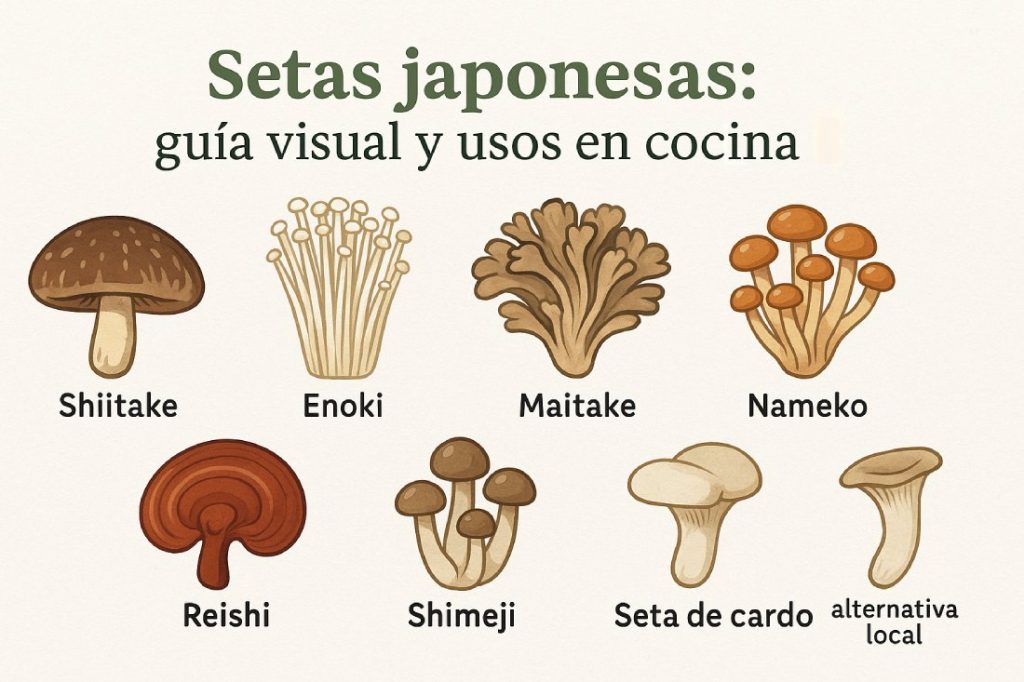
Japanese mushrooms are not only delicious, they are also part of an ancient tradition. In Japan, mushrooms are valued as much for their flavor as for their medicinal properties.
From street markets to Buddhist temples, mushrooms are present in everyday life. They are the stars of iconic dishes such as miso and nabemono.
In addition to their flavor, many Japanese mushrooms offer health benefits: they strengthen the immune system, provide antioxidants, and have an umami flavor that is hard to match.
In this guide, I will introduce you to the most popular varieties, how they are used, and what makes them so special. If you've ever wondered why Japanese people love mushrooms so much, here's your answer.
- Shiitake (椎茸): The queen of Japanese mushrooms
- Enoki (えのき茸): Delicate and crunchy
- Maitake (舞茸): The dancing mushroom
- Nameko (なめこ): Sticky but delicious
- Reishi (霊芝): The mushroom of immortality
- Shimeji (しめじ): Small, tasty, and very versatile
- Interesting facts about Japanese mushrooms
- Using Japanese mushrooms in cooking
- Where and how to eat Japanese mushrooms in the US?
Shiitake (椎茸): The queen of Japanese mushrooms
The shiitake is undoubtedly the best-known mushroom outside Japan. Its name comes from the shii tree, on which it was traditionally grown. Its deep, earthy flavor makes it unique.
It is a star ingredient in Japanese cuisine. It is used in broths, soups, stir-fries, and as a garnish. When dried, its flavor intensifies and it becomes a powerful source of umami.
Beyond the kitchen, shiitake mushrooms have highly valued properties. They are believed to have immunostimulant and antibacterial effects. They are also a plant source of vitamin D, especially when dried in the sun.
Today, they are cultivated all over the world. However, Japanese shiitake mushrooms, especially those grown on natural logs, remain the most prized for their quality and flavor.

Enoki (えのき茸): Delicate and crunchy
Enoki mushrooms have a curious appearance: long, thin, white stems with tiny caps. They have a crunchy texture and a mild, slightly sweet flavor.
In Japan, it is widely used in dishes such as nabe (hot stews), ramen, and light stir-fries. It is also common to see it wrapped in bacon or combined with tofu.
Enoki is not only beautiful, but also nutritious. They contain antioxidants, fiber, and compounds that may have antitumor and anti-inflammatory effects, according to recent studies.
They are grown in controlled environments in the dark, which gives them their characteristic white color. When exposed to light, they actually grow shorter and take on a brownish hue.
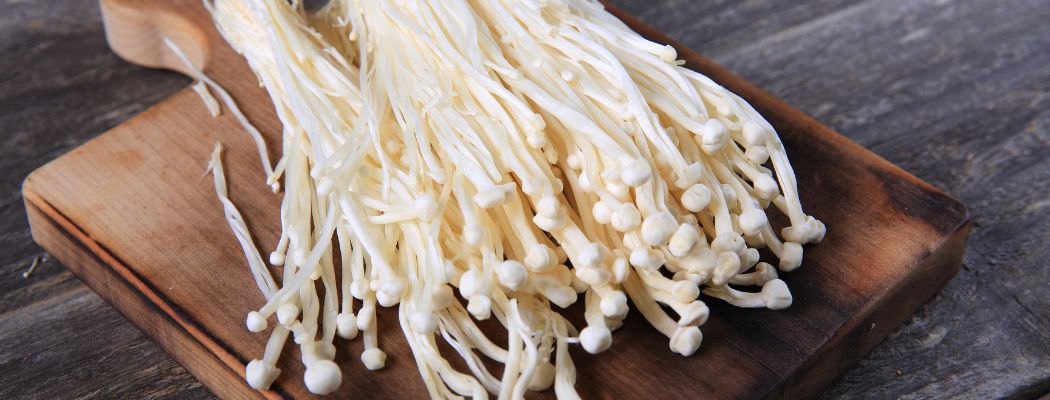
Maitake (舞茸): The dancing mushroom
The name maitake literally means “dancing mushroom.” Legend has it that people danced with joy when they found it in the forest because of its rarity and medicinal value.
It has an elegant, fan-like shape. Its texture is tender but firm, and its flavor is intense and earthy, ideal for stir-fries, broths, or tempura.
Maitake is highly valued in traditional Japanese medicine. It is believed to have benefits such as regulating blood sugar, strengthening the immune system, and helping to lower blood pressure.
It is widely cultivated in Japan, but is still considered a special mushroom. Eating it is almost a small ritual, especially when it is fresh and in season.
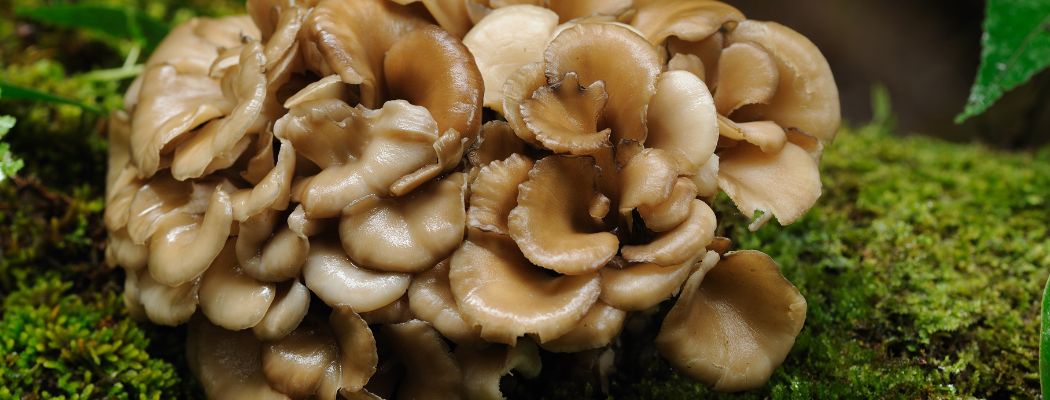
Nameko (なめこ): Sticky but delicious
Nameko is a small mushroom with a bright amber color and a slightly slimy texture. That characteristic “slime” may seem strange at first, but it is part of its culinary charm.
It is mainly used in miso soups, nabemono, and as a topping for rice or noodles. When cooked, its texture softens and adds a silky and flavorful touch to the dish.
This stickiness is not just a quirk of nature: it contains polysaccharides that help protect the digestive system and may have anti-inflammatory effects.
Nameko mushrooms are easily cultivated on blocks of sawdust and are one of the most commonly eaten mushrooms in Japanese households. For many, they are a taste of childhood.

Reishi (霊芝): The mushroom of immortality
Reishi, known in Japanese as reishi or mannentake (“mushroom of a thousand years”), is not consumed for its taste, but for its medicinal properties. It has a hard texture and a bitter taste.
It has been used in traditional Japanese and Chinese medicine for centuries. It is valued for its supposed adaptogenic effects, i.e., for helping the body resist physical and emotional stress.
Reishi is not eaten like other mushrooms. It is prepared in the form of infusions, extracts or supplements. It is believed to have benefits such as strengthening the immune system, improving sleep and combating fatigue.
Although it is not a mushroom used in cooking, it has a deep presence in Japanese culture. It is associated with longevity, calmness, and inner balance.
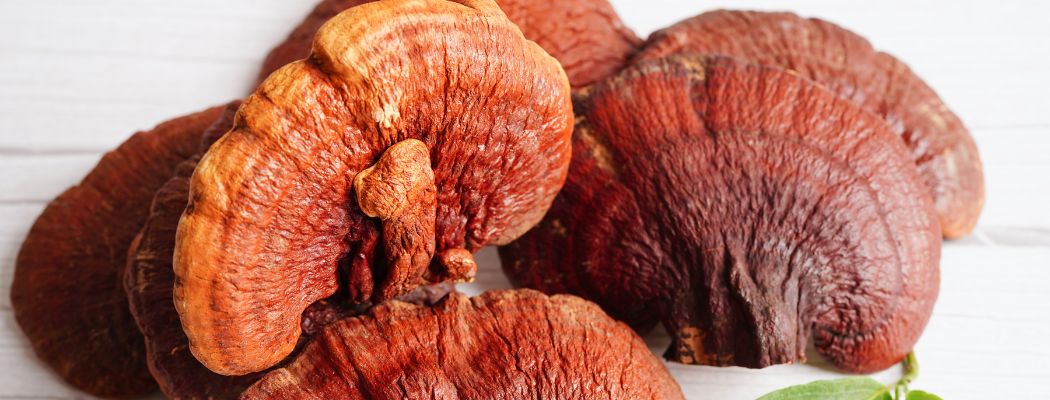
Shimeji (しめじ): Small, tasty, and very versatile
Shimeji are a group of mushrooms that are very common in Japan, known for their small rounded caps and delicately bitter flavor that becomes mild when cooked. There are several varieties, but the most common are:
- Bunapi shimeji (白しめじ): white in color.
- Buna shimeji (ぶなしめji): light brown, also called “beech mushroom” in English.
They are widely cultivated and available year-round. In Japanese cuisine, they are used in soups, stir-fries, ramen, and steamed dishes. Their firm texture and ability to absorb flavors make them very popular.
In Spain, they are not as common as shiitake or enoki mushrooms, but they can be found in Asian or gourmet stores, sometimes labeled as “mixed Japanese mushrooms.”
They are rich in fiber, B vitamins, and bioactive compounds. Like many Eastern mushrooms, they are also being studied for their potential immunomodulatory properties.
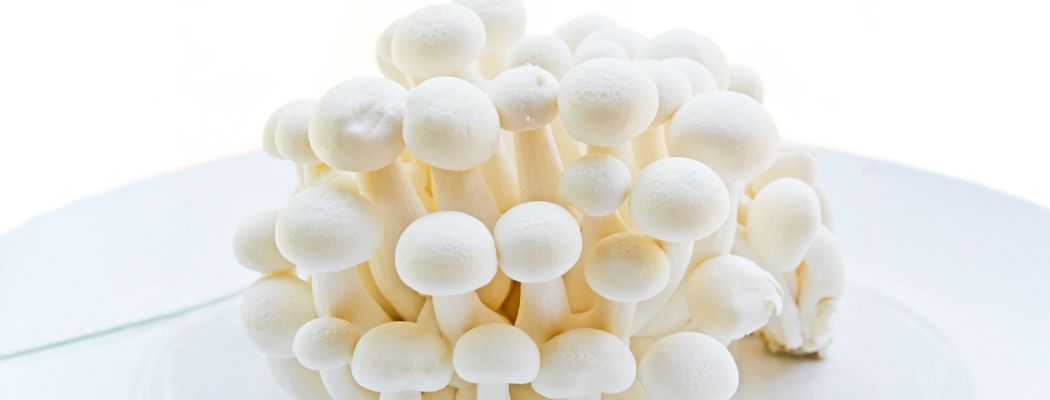
Interesting facts about Japanese mushrooms
Did you know that some Japanese mushrooms are already grown in Spain? Varieties such as shiitake and enoki, typical of Asian cuisine, have found their place in Spain, especially in areas with humid climates such as Galicia and northern Castile and León.
This phenomenon is not just a response to the Japanese cuisine trend. More and more chefs and foodies are experimenting with them because they add a unique umami flavor that transforms any dish. What's more, their versatility means they go well in soups, stir-fries, and even croquettes.
Another interesting fact: these mushrooms are grown using agricultural waste such as wood chips and straw. In other words, they are not only delicious, but also sustainable. A win-win for the palate and the planet.
As if that weren't enough, many are reputed to be good for your health. Shiitake, for example, contains compounds that may help strengthen the immune system. Eating well and taking care of yourself at the same time... what more could you ask for?
Using Japanese mushrooms in cooking
Japanese mushrooms are a star ingredient in many cuisines around the world, and they are becoming increasingly popular in Spanish cuisine. Their deep flavor and unique texture make them ideal for experimentation.
One of their main virtues is their ability to provide umami, that savory flavor that enhances any dish. They are perfect for ramen, stir-fries, rice dishes, or soups, but they also surprise in omelets or croquettes.
Shiitake mushrooms, for example, go great with sautéed vegetables, while enoki mushrooms are perfect for garnishing and adding a crunchy touch to broths and salads. Maitake mushrooms, on the other hand, have a meaty texture that is great grilled.
They are also very practical: many come dehydrated, which means they can be stored for months. All you need is hot water to rehydrate them and you have a gourmet ingredient ready to use.
And if you're looking for healthier options, these mushrooms are rich in fiber, antioxidants, and beneficial compounds. So, as well as being tasty, they are a smart choice for your diet.
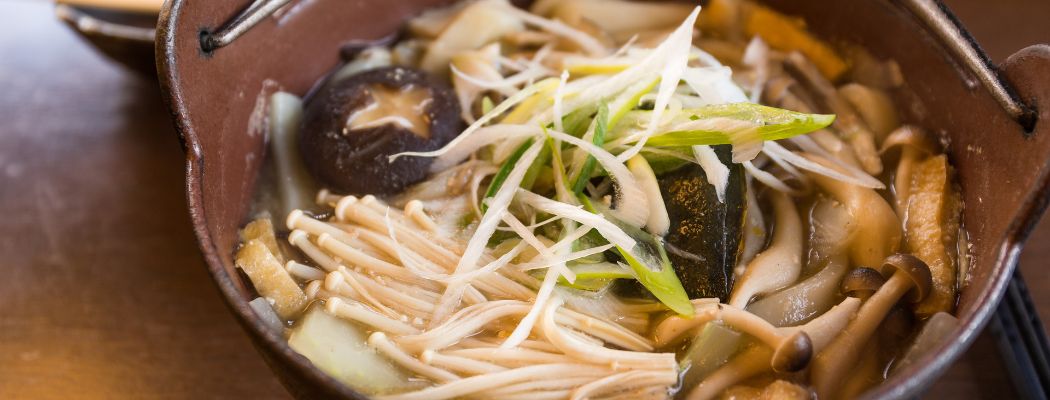
Where and how to eat Japanese mushrooms in the US?
It is becoming easier to find Japanese mushrooms in the US, thanks to the rise of Asian cuisine and interest in healthy eating. Large supermarkets, organic shops, and stores specializing in Asian products usually carry them, both fresh and dried.
Shiitake mushrooms are the most common. It is even grown in Spain, so you will often see it fresh. Enoki and maitake mushrooms are also available in gourmet shops or well-stocked markets, although in smaller quantities.
Dried versions are very practical. Just soak them for a few minutes and they are ready to use in soups, rice dishes, stir-fries, or ramen. You can also find reishi extracts or capsules, especially in health food stores.
If you've never tried them, start with fresh shiitake mushrooms. They have a mild but distinctive flavor and go very well with Mediterranean dishes. You don't have to cook Japanese food to enjoy them!

Te pueden interesar